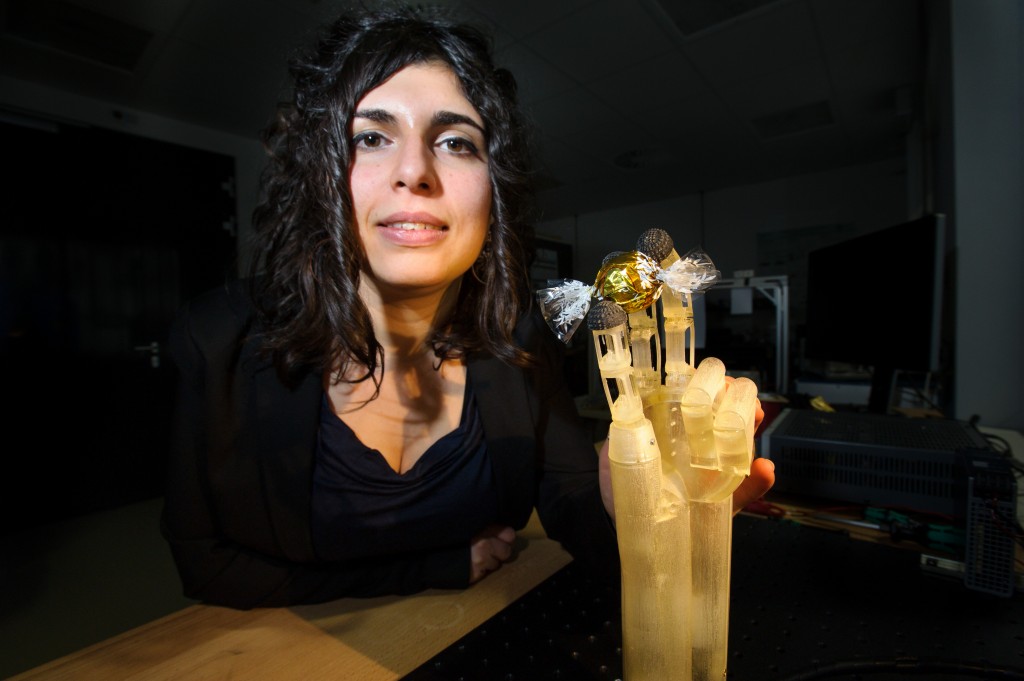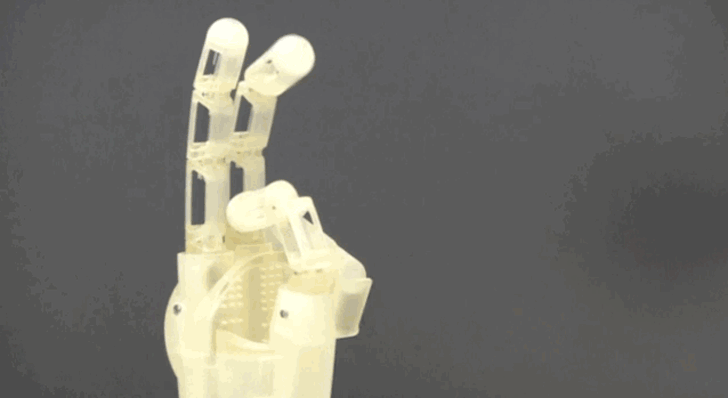A German research and engineering team from Saarland University has designed a unique and lightweight artificial, electronic hand. The hand was 3D printed, but even more extraordinary is the use of of hair-thin strands of nickel-titanium wire called shape-memory alloy. This incredible metal wire has the highest energy density of any known actuation mechanism, allowing the wire to perform powerful movements and actions, like driving the grip of this amazing new bionic prosthetic.
Retaining shape memory gives this wire the ability to return to its original shape after use. The wire is activated by a small electric charge, which is sent through the hand’s wire lattice structure and causes the bionic hand to contract. One of the researchers, Professor Stefan Seelecke from Saarland University and at the Center for Mechatronics and Automation (ZeMA), tells Reuters, “This enables us to build particularly lightweight systems, and the fact that they come in the form of wires enables us to use them as artificial muscles, or artificial tendons. So we can build systems with those that can be like bio-inspired, look-to-nature for a successful prototype, and that’s what we realized with this first prototype of a robotic hand using shape-memory alloy wires.”
The contracting effect was demonstrated in a simple bat prototype, where the electric charge cause the bat to flap it’s wings. Engineer Filomena Simone, a PhD who worked on the prototype of the bionic hand, explained that the inspiration for the wire lattice was human muscle fibers, which are bundled together in our bodies. By bundling the wires, more heat can dissipate through a greater surface area, which means they can rapidly and repeatedly contract and extend the same way real human muscle does.

“The movement of the hand is done by the wire. This wire, when activated, they contract. And we are able to exploit this contraction to make the finger move. And we can move each phalanx independently,” said Simone.
What controls the shape of the smart wires? A single semiconductor chip. The smart wires use electrical resistance to function, so no external sensors are needed. The sensory property of the material allows the hand to move in a precise and efficient manner.
“We can monitor the position of the finger without adding any other sensor; only exploiting this embedded feature of the wire. This helps us to always preserve a very lightweight structure. This is a big deal because normally prostheses until now are very heavy,” continued Simone.
Still in the early stage of development, the team hopes their work will lead to the creation and use of prosthetic limbs that function and feel more natural. They are hopeful that their design will be considered an improvement, especially over the bulky and obtrusive electronics currently embedded in robotic artificial prosthetics.
Professor Seelecke indicated that the prosthetics he envisions could become an integrated part of a person’s nervous system as well, “I think if you look down the road to future prostheses generations, you’d like to see this integrated with the human body in a way that you can actually sense the nerve stimuli and then can feed that into a micro-controller which there will be translated to a corresponding signal to activate the muscle. So, eventually you need to couple nerves with proper electrodes and combine that with the actuation of the muscles so you can create some integrated, biologically inspired actuation system for prostheses.” Makes you wonder what artificial pain would feel like.




